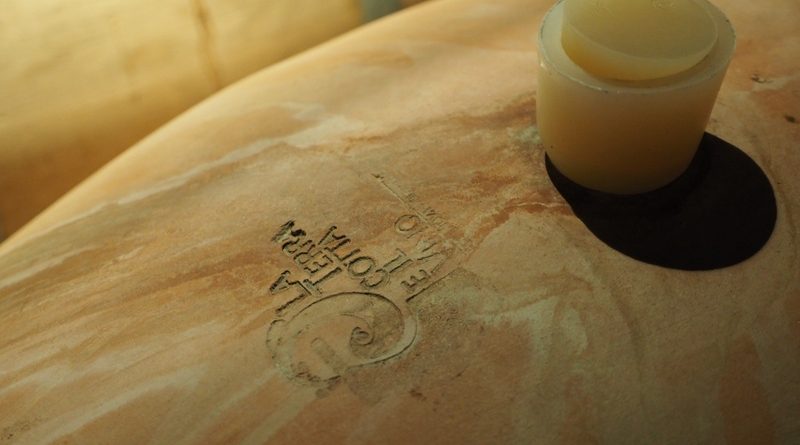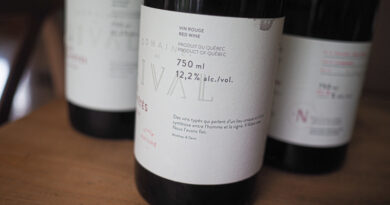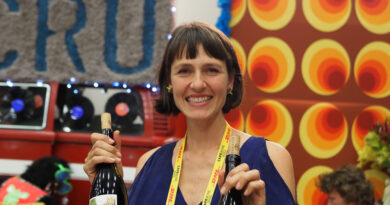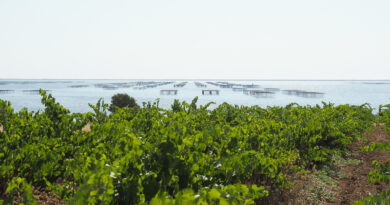In Champagne: Leclerc Briant
Leclerc Briant is a newly revived Champagne house with a unique approach, including some very alternative élevage, and ageing one of its cuvées in the sea. Goode and Ring visited to find out more.
Lucien Leclerc founded the house in 1872 in Cumiéres, with 4 hectares of vines. The Leclerc family owned it and ran it for four generations and in the fifth it became Leclerc-Briant when Bertrand Leclerc married Jaqueline Briant, who also had a few hectares of vines. Bertrand was one of the first in Champagne to farm organically back in the 1960s. This was a period when the use of chemicals was booming in the region. In reality, Bertrand was just returning to the farming of his ancestors, who were farming everything organically up until the chemical trend. With a strong belief in the soils and vines, he began making single-vineyard wines, which was also unusual at the time.
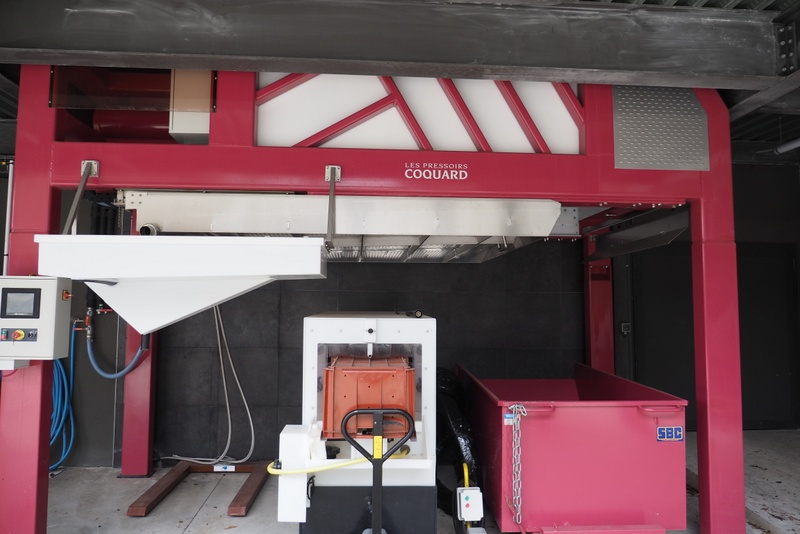
They moved to the current location in Epernay in the mid-1950s and became a negociant, buying grapes, to expand their range. Bertrard’s son, Pascal Leclerc, was the first in Champagne to practice biodynamics, along with his friend Jean-Pierre Fleury in the Aube. At the end of the 1980s they trialled biodynamics on parts of their vineyards. The experiment was a success, and Pascal converted the vineyards of Leclerc-Briant, which was then almost 30 hectares, to biodynamics, now Demeter certified.
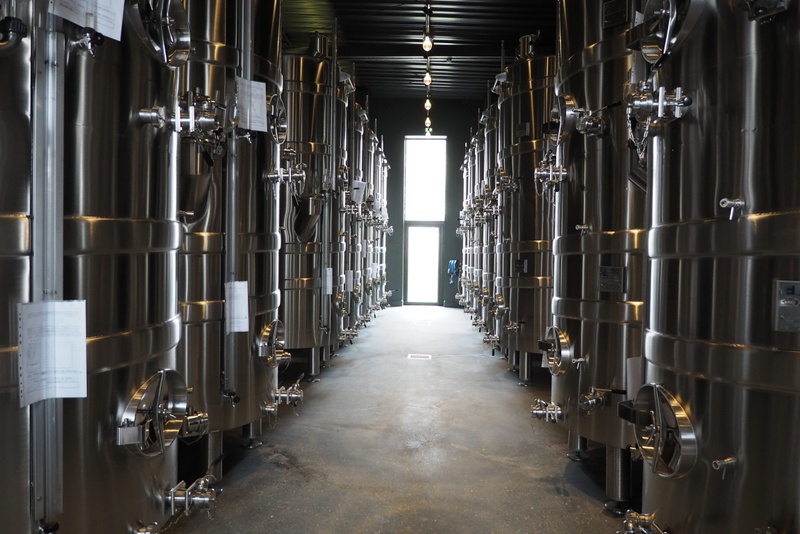
Pascal died young in 2010, leaving four daughters. The eldest was 26 and struggled to oversee the growing operation, selling a large part of the vineyard to keep the company afloat, but it didn’t work. In 2012 the winery was dying, being swallowed by bigger houses, as so often happens. It was bought by two locals: the consulting winemaker at the time, Hervé Jestin, who came on as full time, and Frenchman Frédéric Zeimett; along with an American couple who were investing in hospitality and Champagne: Mark Nunelly and Denise Dupré. The couple also own the Royal Champagne hotel, which has been spectacularly remodelled.
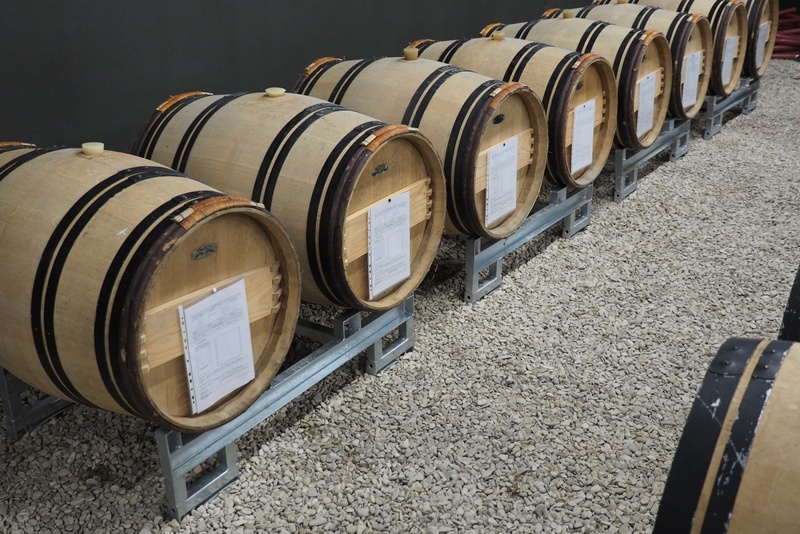
‘Since 2012 we have been trying to give a new life to this house,’ says Pierre Bettinger, commercial director of Leclerc Briant, who hosted us. ‘We have remodelled everything. We have bought new vineyards, and everything is Premier Cru or Grand Cru except in Epernay and Romery, and everything we own is biodynamically farmed and Demeter certified.
They also buy grapes from another 10-15 hectares depending on the vintage, but these are always organic at minimum.
They added a cooling system, with a cooling table so the juice can chill when it flows down from the press. It shows the level of precision and attention to detail that Jestin has. Hervé is renowned as one of the most talented oenologists in Champagne, having been Chef de Caves at Duval Leroy for 20 years. He has consulted for wineries across the globe and is considered to be one of the world’s leading specialists in biodynamic sparkling winemaking. Jestin also currently oversees all aspects of the winemaking at England’s Hambledon Vineyard.
The use just primarily the cuvée from the press, and then sell the taille. The wine is settled in tank, and then ferments in stainless steel and barrels. There’s no new oak, and all the barrels come from two prestigious estates in Bordeaux, previously used for Sauternes and Graves blanc. The premium wines are fermented in oak, while the classic Brut is 15-20% in oak, the rest in stainless steel.
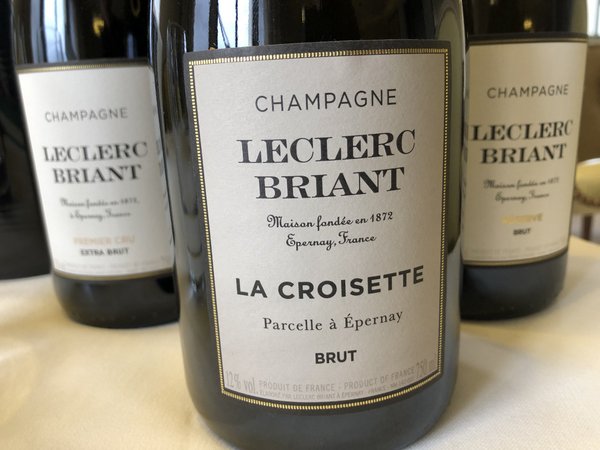
‘One of the specificities of the house is that we have quite long ageing before bottling,’ says Bettinger. ‘Most houses bottle in February to March, while we bottle in July.’ The still wine is left on lees for around 10 months. ‘The result is more complexity in the wine,’ he says. ‘We let them go through full malolactic fermentation. The long ageing also means that we don’t need to do any filtration or fining. The result is more density in the wine, and tinier bubbles, something that we seek.’ Assemblage is done at the end of June/early July.
They did buy some new barrels, but they fermented taille in them and then sold the taille, before they used them. No reserve wines are used at Leclerc-Briant except for their Divine Solera cuvée; everything is from a single vintage, though the wines are not always labelled as such. According to Bettinger, keeping these wines within NV status allows them to be part of a bigger, more lucrative pool of champagnes (the classic NV Brut category, for example).
‘Another specificity of Leclerc Briant is innovation,’ says Bettinger. ‘We always try new ways. That’s how Hervé Jestin is: he’s been making wine in Champagne for almost 35 years, but he’s always searching, always questioning. We tried terracotta eggs in 2015 for the first time. We also did some tests for ageing in bottle. We now put several thousand bottles in the ocean for over a year at 60 m deep. We are now on the second vintage of this cuvee, called Abyss.’
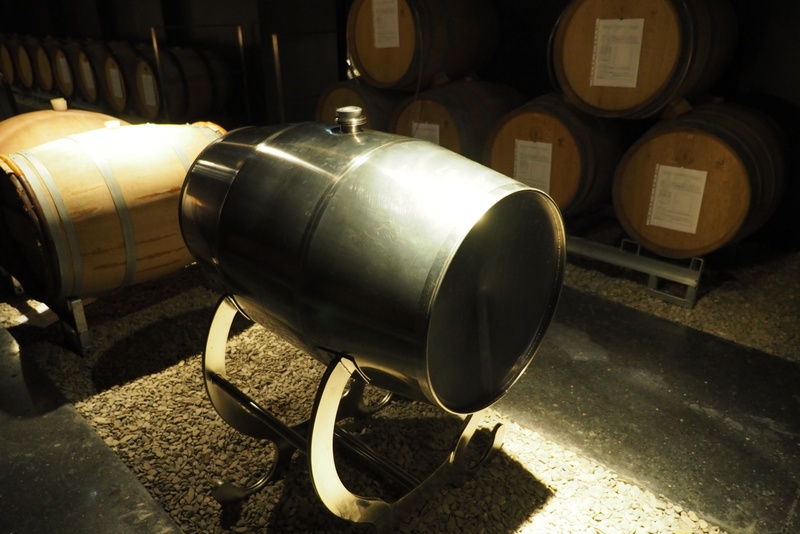
They also have a gold-lined barrel. ‘It is the same size as the oak barrels. The inside is gold. It is not a foil, it is built-in gold. There are 2 microns of gold all the way round the inside of the barrel, the equivalent of 1 kg. This is to test the vinification and fermentation in gold. Hervé says it was important to have, with the terracotta eggs, the connection with the earth, the telluric. And with the gold there is the connection with the sun, the cosmic. And oak is the junction that joins the telluric and the cosmic.’
‘Gold is a strong symbol of alchemy and the purest metal. For all these reasons we decided to create this barrel. It is the only one in the world, and we have a patent for it. We first used it in 2016 and we are now on our third vintage using gold.’ La Croisette, a single-vineyard wine, is fermented in this barrel, as well as oak and terracotta. There isn’t a wine that is solely made in gold. The wine is slated to be released in 2021.
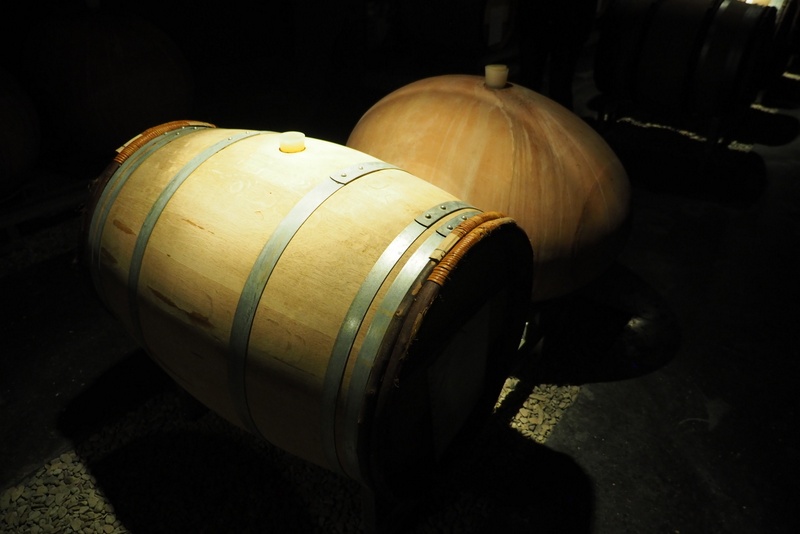
The specially-designed Tuscan terracotta eggs arrived in 2015. It was the first time these had been made for laying down, rather than upright, as Jestin didn’t want the lees in suspension.
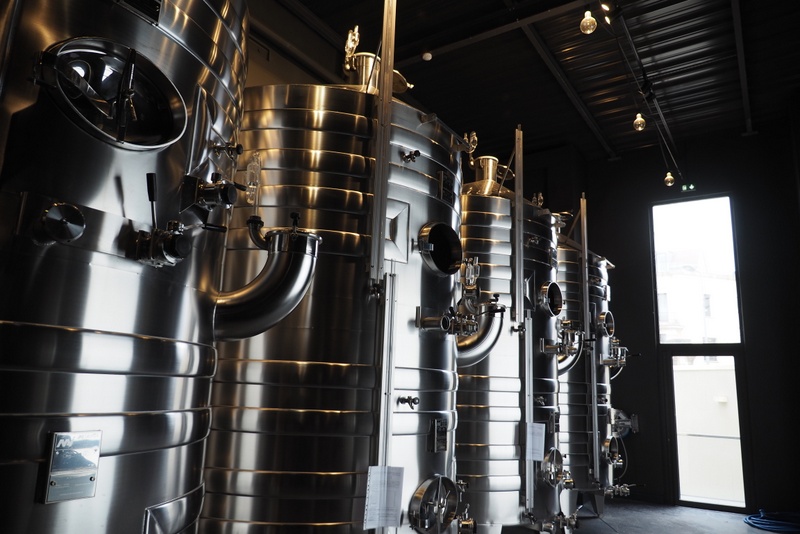
The press is 4000 kg, and their tanks are 2500 litres, to take one press load each. Hervé Jestin designed all the tanks according to the golden number. They all have special plugs which links them to the earth, so the energy can flow between the wine and the earth.
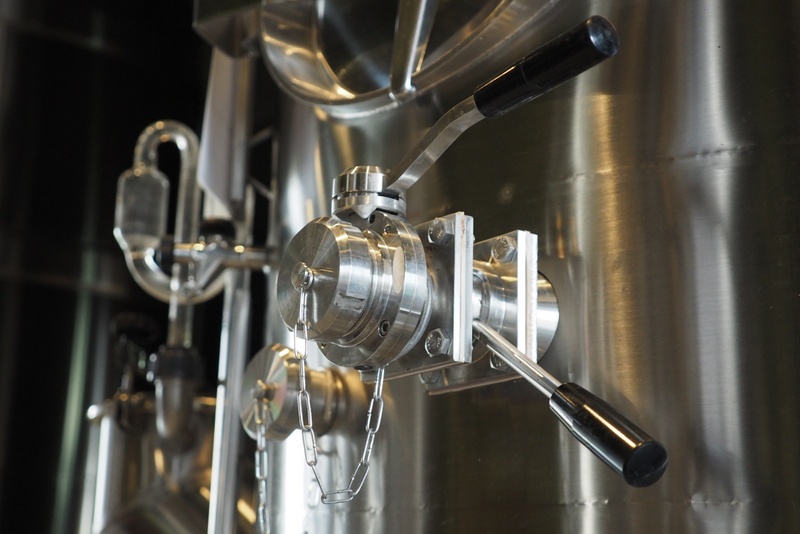
They are constantly running analysis and trials on their wines. Jestin initially believed there to be approximately 5000 different components in wine, though recent research the winery has participated in shows there is up to 50 – 60 000 various components in wines.
The winery was making 20 000 bottles when it was purchased in 2012. For the last few years they made 150 000 bottles, and in 2019 bottled 200 000. The goal is to reach the level where they are selling 200 000 bottles annually. They export 65% of production, and the United States, Canada, and Japan are key markets for them.
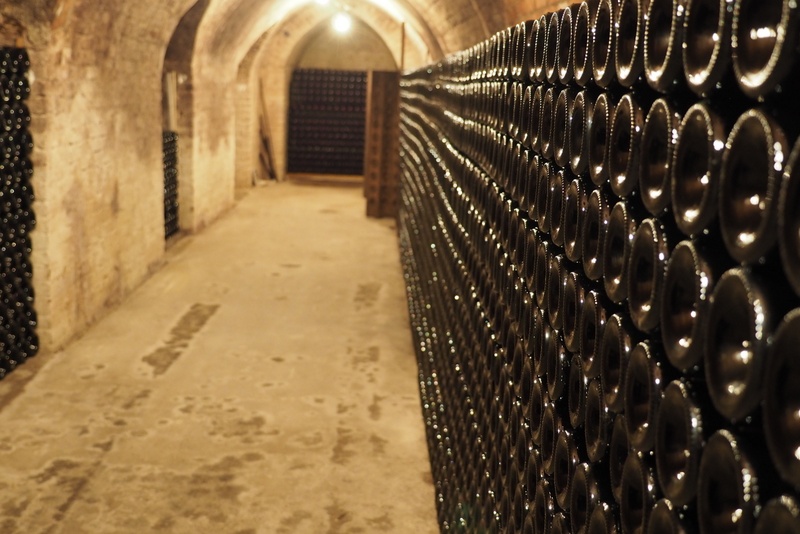
They are one of the smallest negociants. I think we are coming back from a time when there was a trend for growers, which was good,’ says Bettinger. ‘But if you can get your hands on some beautiful grapes from a location where you don’t have vineyards, why not?’
THE WINES
Champagne Leclerc-Briant Brut Réserve NV
Main production, 75% of the volume. This is 2014 vintage. 40% Pinot Noir, 40% Meunier and 20% Chardonnay, vinified partly in oak, but the majority in stainless steel. Bottled July 2015 and bottled May 2018, 4 g/l dosage. This is tight, linear and focused with high acidity. Very direct with compact citrus fruit, a hint of apple and some nutty savouriness. Good concentration here, with nice intensity. Should age well. 93/100 (JG)
This wine, making up 75% of production, is a bit of a misnomer: there are no reserve wines (it’s entirely the 2014 vintage) and it’s actually extra-brut, with 4/gl dosage. This blend of 40/40/40 Pinot Noir / Pinot Meunier / Chardonnay was native fermented in stainless and oak (the latter 20%) before going into bottle for 3 years on lees. Weighty and confident, with yellow fruits, red apple, patisserie, and almond, closing out with a grippy and fresh finish. Lovely density and integration here. A producer to watch. 91/100 (TR)
Champagne Leclerc-Briant Premier Cru Extra Brut NV
2013 vintage. 70% Pinot Noir, 15% Pinot Meunier and 15% Chardonnay. Half vinified in oak, four years on lees. 2.5 g/l dosage, disgorged November 2018. Fresh, focused and quite pretty with zesty citrus fruit, some talcum powder and fine herby hints. It is light and expressive on the palate with lovely fruit expression. Delicate with some lovely crispness, but also a hint of cranberry and cherry. 93/100 (JG)
This is the first vintage of this cuvée, a blend of 70% Pinot Noir, and 15% each of Pinot Meunier and Chardonnay, all from 2013, and sourced from four villages. The wines were native fermented, half in oak, before blending and 4 years on the lees. This was disgorged November 2018 with 2 g/l. Very finely textured, precise and energetic, with lifted cherry blossoms, lemon, green apple, subtle anise, and a wash of salts on the lengthy finish. Quite a refined and finessed, delicate expression of pinots, tightened with the chardonnay. Lovely, lively, and moreish. 93/100 (TR)
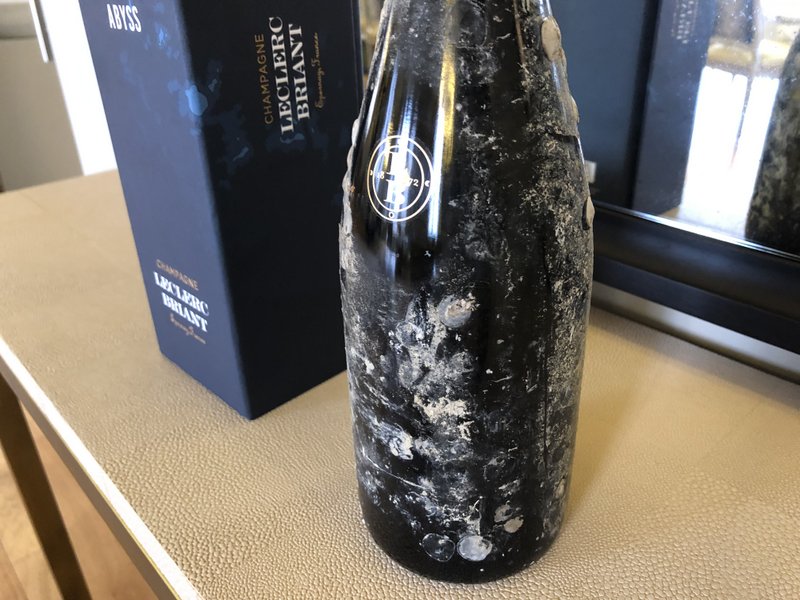
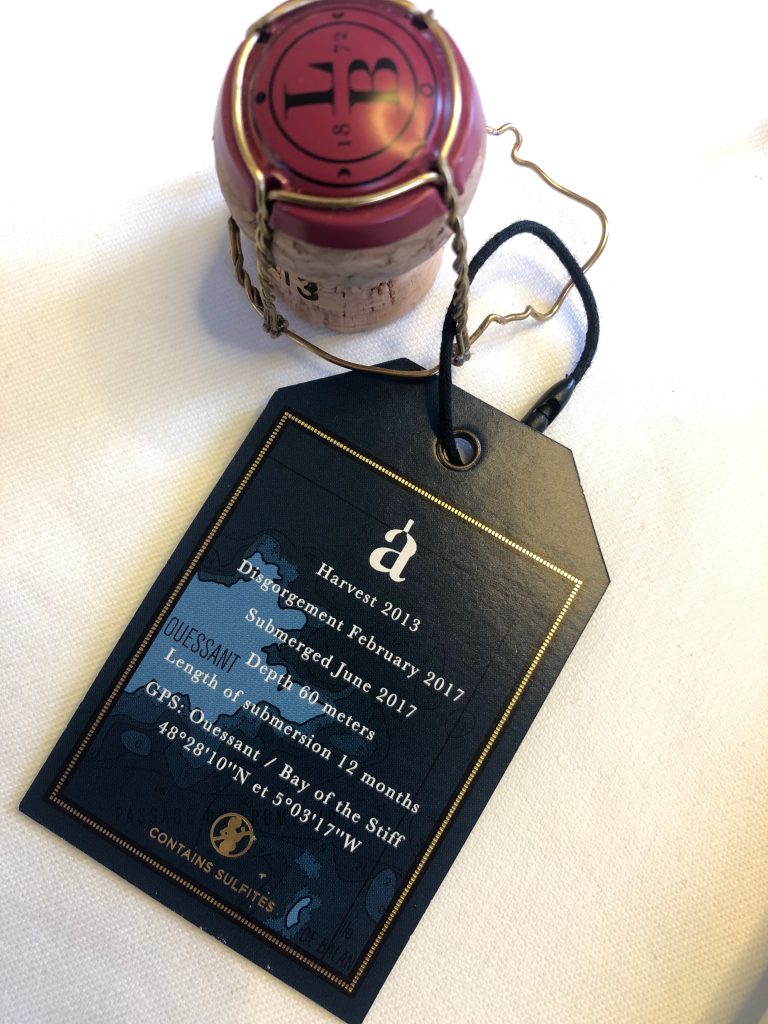
Champagne Leclerc-Briant Abyss Brut Zero NV
Done two lots, each of 3000 bottles. First vintage 2012, now 2014, and 4500 bottles under the ocean in Brittany right now. Did a first test of 48 bottles of Brut Reserve under the ocean for a year, and did a series of blind tastings with agents and Essi Evallan, and a journalist from Singapore. Did four wines of the same vintage, two of which were aged under the ocean. All of them picked up on the ocean-aged wines, saying they had different depth and harmony, and a touch of saltiness. As soon as they started to organize more blind tastings, everyone was very excited and it was a great success. It sells out. This is 2013 vintage, disgorged February 2017, submerged June 2017 at 60 metres (same pressure inside and outside the bottle) for 12 months. One third each grape on very chalky soil. Tight and lemony with a saline twist (though presumably not from the seawater!), showing a lovely mineral core and fine citrus notes. This has lovely detail and finesse. 94/100 (JG)
The winery is now into its 3rd lot of Abyss currently in the sea with 4500 bottles (3000 for first 2 vintages). This was bottled (July 2014), and disgorged with zero dosage and corked in Champagne (February 2017), and then shipped to the coast of Brittany, and submerged to 60m at Bay of the Stiff, a place where the Channel and Atlantic Ocean meet, and the water is dynamic with strong currents. This depth allowed the wine’s 6 bar pressure inside the bottle to be the same as the pressure outside. It remained there for 13 months. There is no label; all the information about the wine is affixed to the cage. Lemon, white grapefruit, and mineral salts stream along this sleek wine, with tight perfumed lemon, ample chalky texture, and brisk astringency on the finish. The grapes for this wine come from soils with high level of chalk content, which would impart the aforementioned salinity to wine (as opposed to any seawater). These early bottles were sealed with wax, though later bottles were not as it hadn’t any detectable affect on the finished wine. 93/100 (TR)
Champagne Leclerc Briant Divine Solera NV
Cuvée Divine Solera is not released every year, and uses only estate fruit. It is a 50/30/20 blend of Pinot Meunier / Pinot Noir / Chardonnay, native fermented in oak, and based on the 2007 vintage, with a reserve solera from 06, 05, and 04. This spent 48 months on lees before being disgorged with 3 g/l in September 2018. Luxurious from first sniff, with the plumpness of meringue, toasted brioche, lemon curd chisled by a taut, chalky acidity that textures the long length of the palate. Quite seamless; the dosage is perfected situated to counter the richness of fruit and autolysis. Quite a powerful and confident wine, handled extremely well. 93/100 (TR)
Champagne Leclerc Briant La Croisette Brut Zéro 2014 France
A single vineyard (0.5 hectares) in Epernay next to the house. On top of the hill with some clay in the soil. It was planted by Bertrand Leclerc in the 1960s, after he had started his organic farming, so this vineyard has never seen any chemicals. 100% Chardonnay planted 1966. Low yield, vinified 10 months in oak, then three years on lees. 2014 vintage, disgorged summer 2018 with no dosage. Elegant, fine, toasty, mealy nose with some almond and citrus fruit. Structured and savoury on the palate, this is vinous: very much Burgundy in style, with nuts (almond and hazelnut), vanilla, spice and seamless citrus fruit with some pear and white peach richness. Profound stuff. 96/100 (JG)
From a single parcel in Epernay, next to the house, this 1/2 ha was planted by Bertrand Leclerc in the 1960s near the top of the hill, on clay and chalk soils. Organic from the beginning, these old vines give very low yield. This was entirely vinified in oak over 10 months before spending 3 years sur latte. This bottle was disgorged summer 2018, with zero dosage. Very fine, delicate, and finessed with lemon pith, chalk, and an alluring kiss of reduction. The structure is gossamer light and lifted, while the energy and vibrancy stuns. 2500 bottles are produced in a good year. 96/100 (TR)
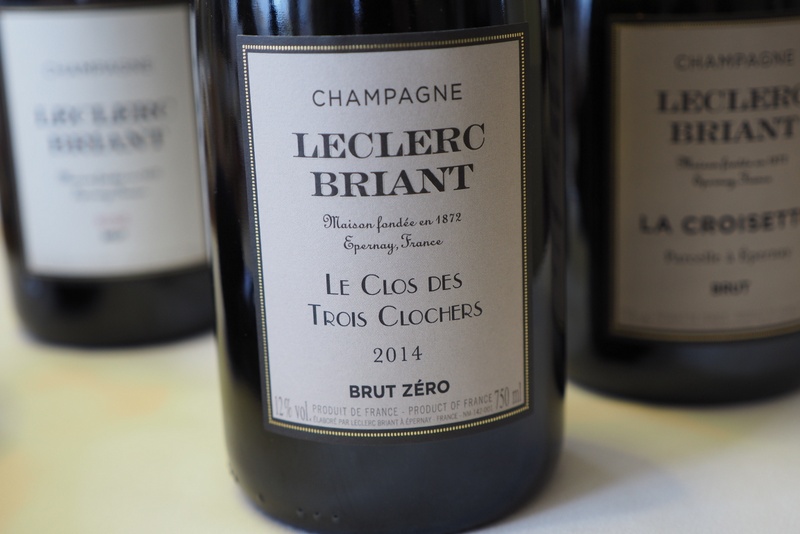
Champagne Leclerc-Briant Le Clos de Trois Clochers Brut Zéro 2014
First vintage of this first wine, 1500 bottles from this clos. The vineyard was purchased in 2012 and it is just Chardonnay. Bottled as a single-vineyard in 2014. Vinified in oak for 10 months, three years sur lattes, disgorged in August 2018, zero dosage. Very chalky soils, facing north to Reims. Delicate, aromatic nose with fine toast, spice and citrus fruit. Quite floral and precise. The palate is lemony, fine and waxy with some precision and a lovely acid core. Very detailed, fresh and elegant with astonishing tension and lovely linearity. 96/100 (JG)
This is the first vintage from a single 0.3ha ‘clos of the three steeples’ from a vineyard in the 1er Cru village of Villers-Allerand, purchased in 2012. The north facing soils are rich with chalk and rocks, and planted to 40 year old vines. This was vinified in oak for 9 months, before three years sur lattes, disgorged in August 2018 with zero dosage. Chalk, whiffs of anise and struck stone imbue lemon, white grapefruit and pear skin, brisk with astringency and energy. Quite powerful, while delicate at the same time. 1500 bottles. 95/100 (TR)
Champagne Leclerc-Briant Blanc de Meuniers Premier Cru Brut Zéro N/V
This Pinot Meunier came from the 1er Cru village of Chamery, and a north-facing site with very chalky soils. It was fermented and aged for 10 months in oak before three years aging sur lattes and zero dosage. Tight, crispy pear, meringue, hints of raspberry rule this energetic wine, with a depth of stony minerality as a base, and a dusting of spices as a finish. 2800 bottles. 93/100 (TR)
Champagne Leclerc-Briant Rosé Brut NV
2015 vintage. 95% Chardonnay, 5% Pinot Noir, disgorged September 2018, 5 g/litre dosage. An aperitif style of rosé that’s an assemblage, using Pinot Noir from Olivier Houriot in Riceys. This is quite delicate and elegant with nice precision to the cherry fruit with some sweet citrus notes. Has a sense of harmony. 93/100 (JG)
The Rosé Brut is labeled NV, but this bottle is from the 2015 harvest, and a blend of 95% Chardonnay (from Chouilly and Montgueux), 5% Pinot Noir (purchased from a vineyard in conversion to biodynamics in Les Riceys), native fermented in stainless, with a small amount of the Pinot Noir fermenting in wood. The cepage rests for two years on lees before being disgorged with 5g/l (this bottle in September 2018). Light salmon in hue, this is quite vinous, with fine but persistent bubbles, red currants, cranberry tartness, and brisk astringency, wrapped around a youthful core of red fruit. A kiss of sweet raspberry lingers on the finish. Excellent food wine. 91/100 (TR)
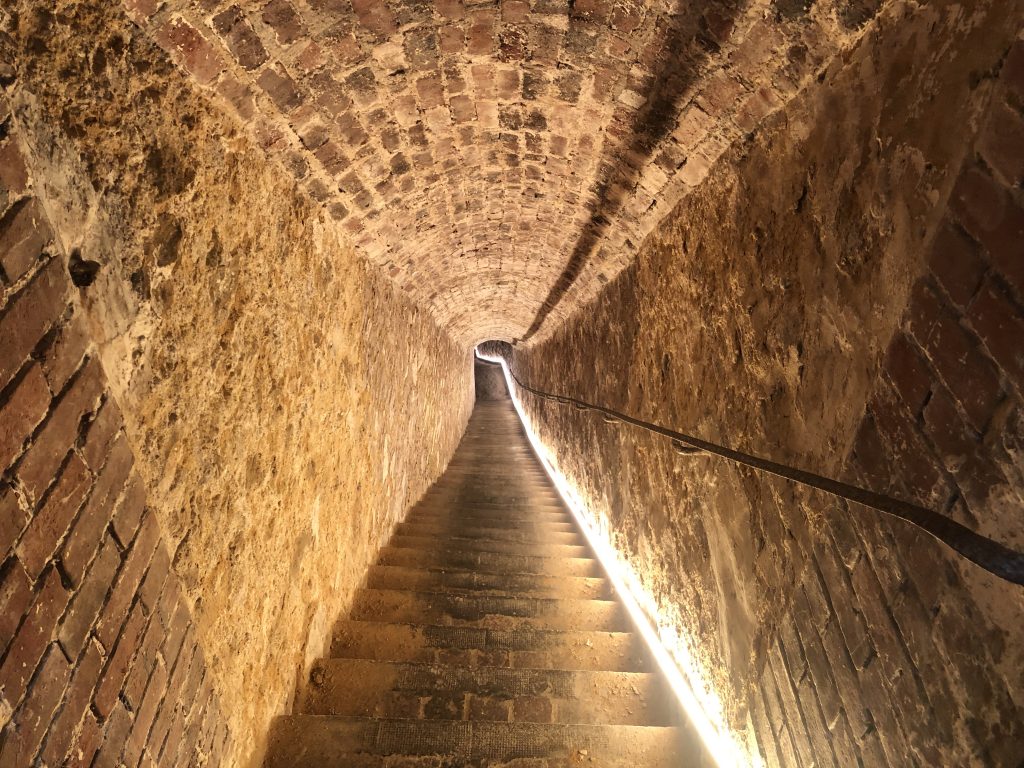
See also:
- In Champagne: Louis Roederer
- In Champagne: Pierre Gimonnet
- Beyond Grower Champagne: where have all the growers gone?
Click through for previous articles on Champagne and Grower Champagne
Find these wines with wine-searcher.com

